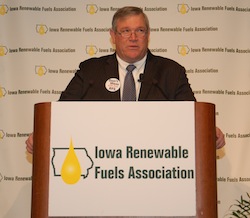Despite record offshore wind energy projects coming online in 2013, a recent report shows that new projects have slowed. Last year, 418 offshore turbines came online in Europe making a record 1,567 Megawatts (MW) of new capacity. This is one-third more than the capacity installed in 2012.
This makes a new total of 6,562 MW of offshore wind power – enough to provide 0.7 percent of the EU’s electricity.
 However, the report finds that when taking a closer look at what happened, there was a slow-down during the year: two-thirds of the new capacity came online in the first six months. With 11 projects now under construction, down from 14 this time last year, market and regulatory stability is critical to bringing forward the 22,000 MW of consented projects across Europe.
However, the report finds that when taking a closer look at what happened, there was a slow-down during the year: two-thirds of the new capacity came online in the first six months. With 11 projects now under construction, down from 14 this time last year, market and regulatory stability is critical to bringing forward the 22,000 MW of consented projects across Europe.
“The unclear political support for offshore wind energy – especially in key offshore wind markets like the UK and Germany – has led to delays to planned projects and fewer new projects being launched,” said Justin Wilkes, Deputy CEO at the European Wind Energy Association (EWEA). “This means installations are likely to plateau until 2015, followed by a decline as from 2016.”
Wilkes added, “An ambitious decision on a 2030 renewable energy target by the Heads of State in March would be the right signal to send to the offshore wind sector that Europe will develop its massive offshore wind potential for green growth, jobs, industrialisation, technological leadership and CO2 reductions.”
In 2013 Siemens was the leading turbine supplier (69%), DONG Energy the leading developer (48%), and Bladt the leading substructure supplier (37%), as they were in 2012.










